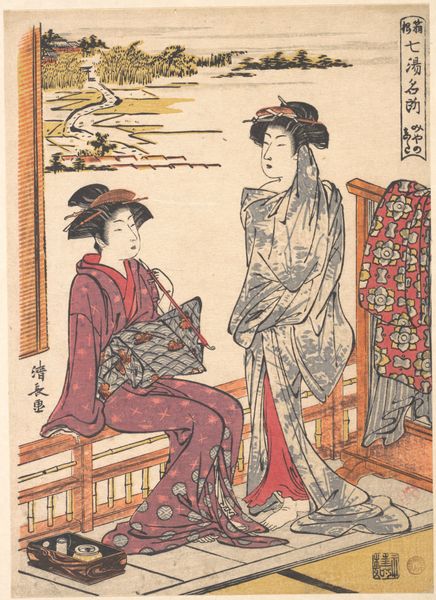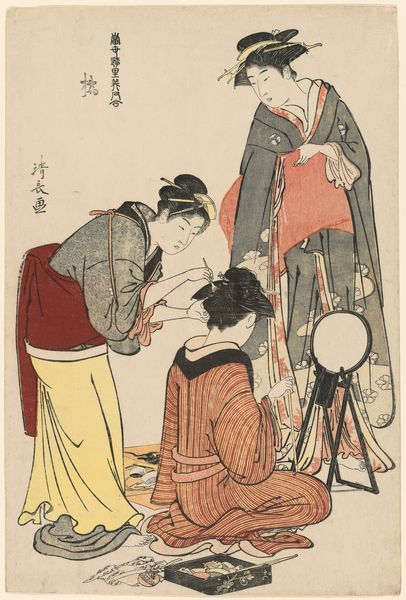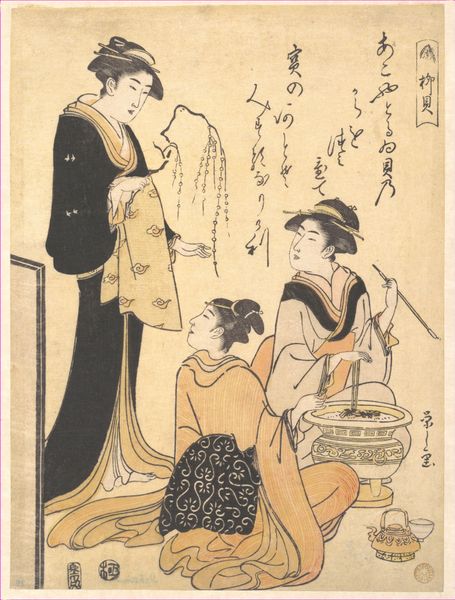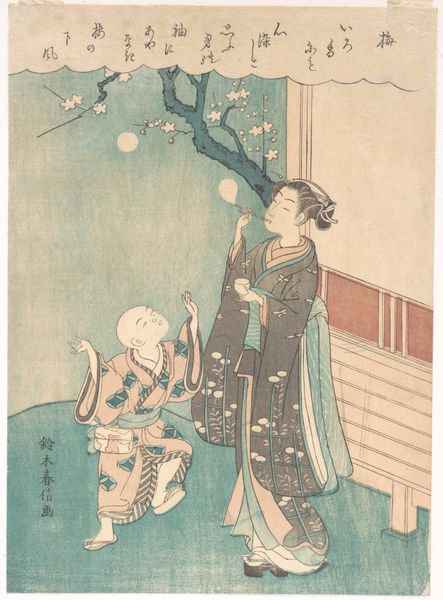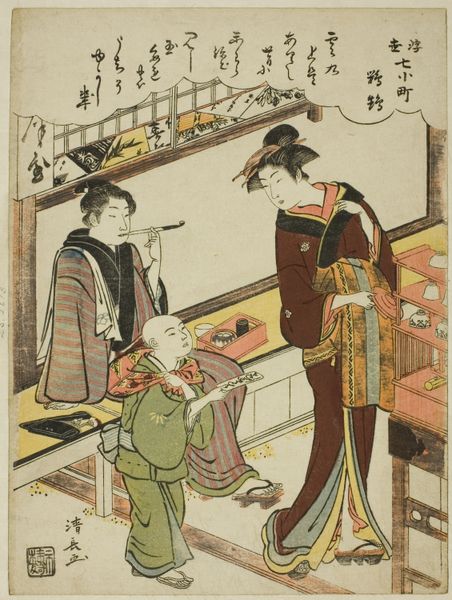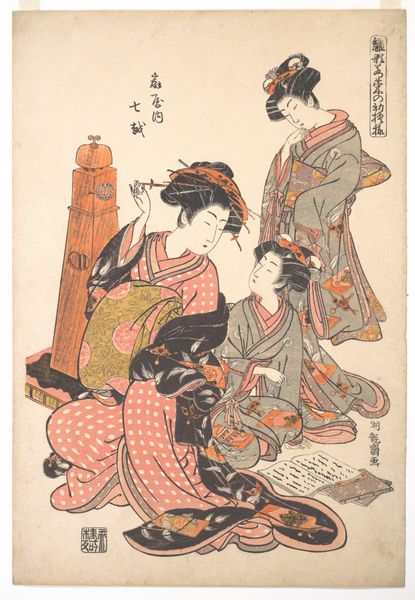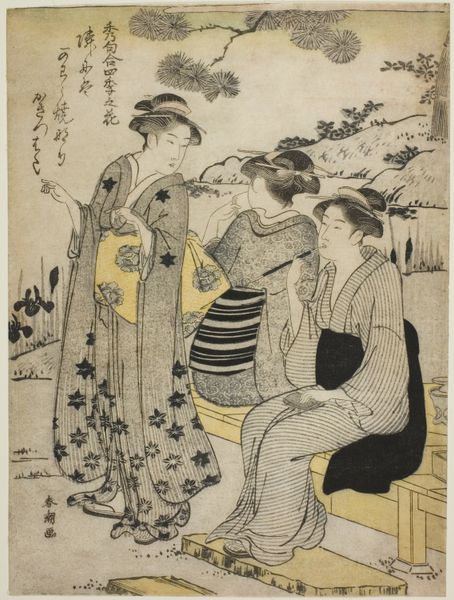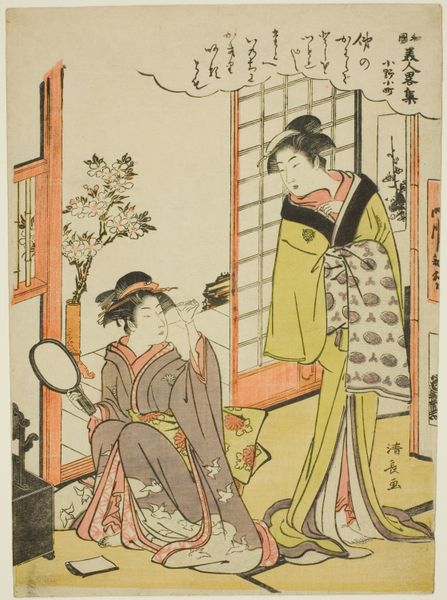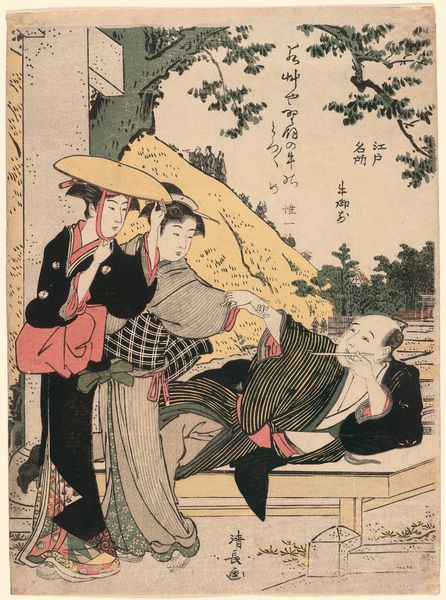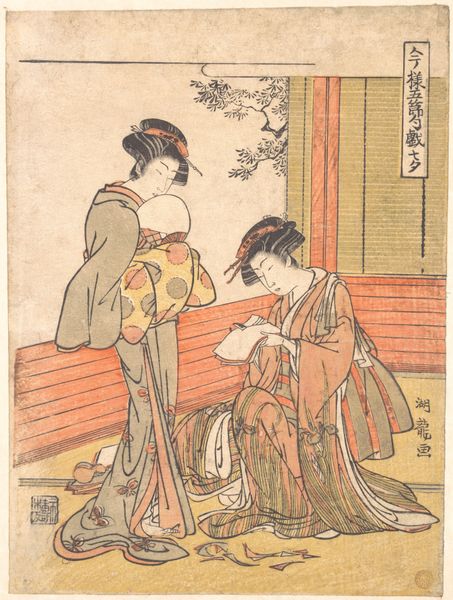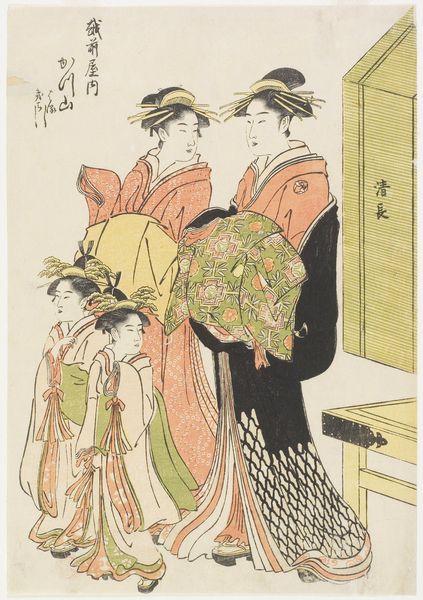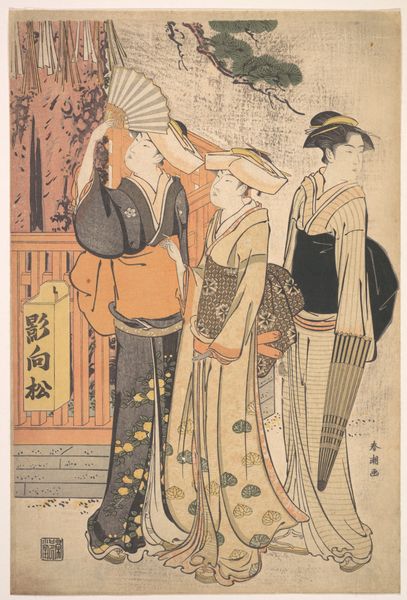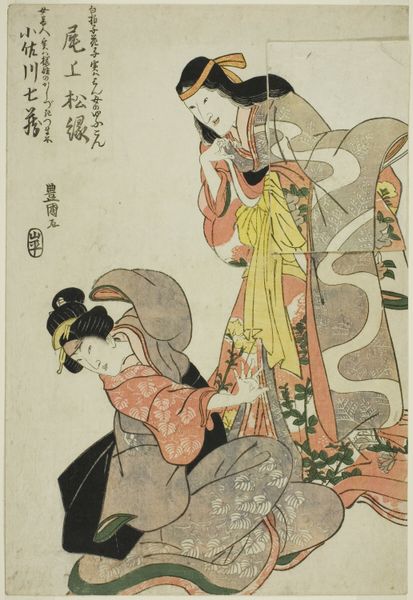
Buying Potted Plants, from the series "A Brocade of Eastern Manners (Fuzoku Azuma no nishiki)" c. 1783 - 1784
0:00
0:00
print, woodblock-print
#
portrait
#
narrative-art
# print
#
asian-art
#
landscape
#
ukiyo-e
#
woodblock-print
#
genre-painting
Dimensions: 39.6 × 26.6 cm
Copyright: Public Domain
Curator: Let's explore this print titled "Buying Potted Plants, from the series 'A Brocade of Eastern Manners (Fuzoku Azuma no nishiki)'", crafted around 1783-1784 by Torii Kiyonaga. It's currently held here at the Art Institute of Chicago. What are your first thoughts? Editor: The subdued color palette creates a sense of quiet elegance. The lines are so graceful, and the composition—especially how the figures are arranged—draws the eye down and across the image, settling on those charming potted plants. Curator: Indeed. Kiyonaga, working within the ukiyo-e tradition, focused heavily on the depiction of fashionable women, often engaged in everyday activities. Note the intricate patterns on the kimonos—a direct reflection of the textile industry and available materials of the time. Editor: Absolutely, and the textiles also underscore their status. Beyond the materials, though, consider how the artist uses lines and color to subtly define their individual personalities and relationships to one another. Look at how the vendor's posture is very different from that of the standing women. Curator: Right, there's a clear distinction in labor. These prints were not just aesthetic objects, but commodities themselves. Think about the labor involved in producing these woodblock prints. The paper making, the carving of the blocks, the printing process, the distribution—a whole industry supported by images like this. And whose labor and what type of labor? Editor: Good points. Formally, there's a balance between the detail in the foreground figures and the almost sketch-like quality of the background elements. That lantern creates a sense of depth, despite the flatness typical of ukiyo-e. The empty space, as well, brings such calm to the composition. Curator: I see it as a window into the lives of Edo-period consumers and artisans, a complex network of production and consumption. These images, cheap yet decorative, were part of that economy. The woodblocks themselves were commodities to trade, produce and exchange as prints. Editor: So well articulated! This print rewards close looking, allowing us to observe Kiyonaga's artistry and consider his social milieu. Curator: And reflect on the vast web of human endeavor necessary to produce it. Editor: Agreed. It leaves me thinking about how much artistry we sometimes take for granted in everyday scenes.
Comments
No comments
Be the first to comment and join the conversation on the ultimate creative platform.
